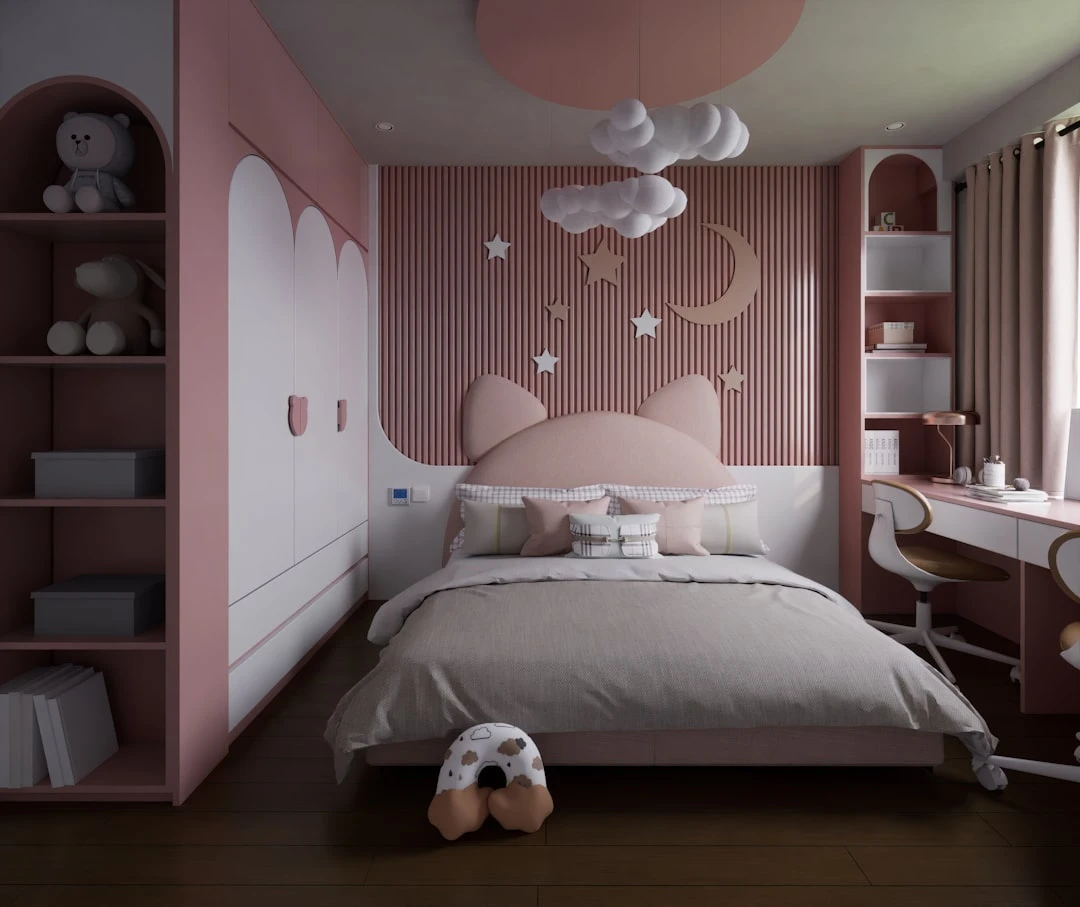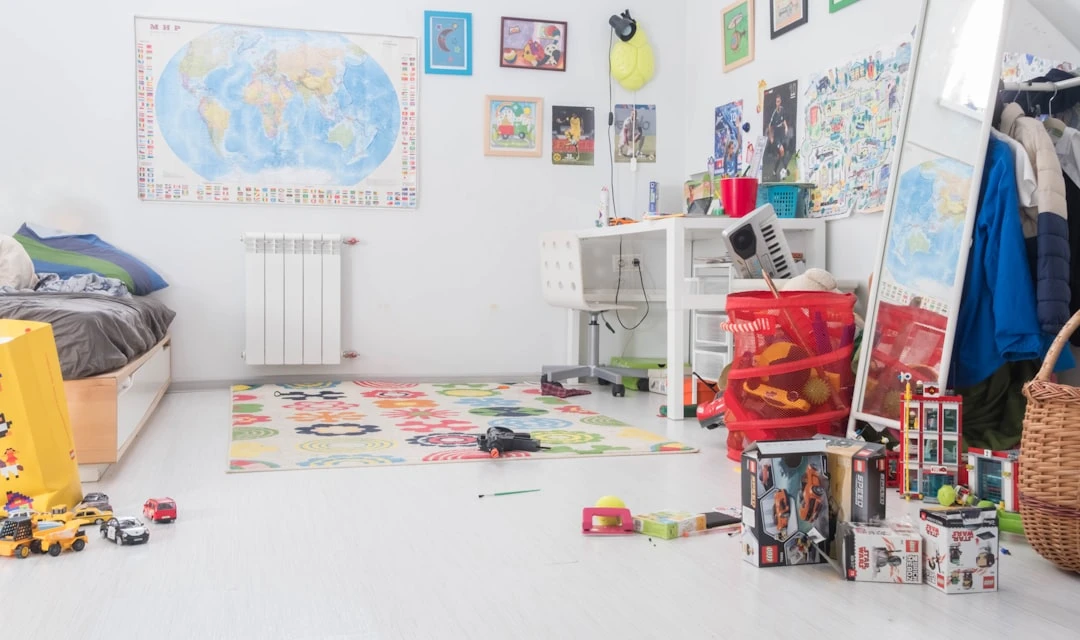Thoughtful Children's Room Planning and Furnishing

A child's room is the child's first personal world – a place where they grow, play, learn, and rest. A well-planned children's room contributes to the child's development, ensures their safety, and makes everyday life easier for both the child and parents. But how do you plan a space that meets the child's needs and grows with them?
Comprehensive space planning strategy
Start designing the children's room by thinking long-term – how the room should adapt according to the child's age and needs. Divide the room functionally into different zones:
Sleeping zone – a calm area for rest, away from toys and bright stimuli
Play zone – enough space for developing imagination, ideally with natural light
Learning zone – (for older children) a separate corner for concentration, with good lighting
Storage zone – well-thought-out solutions for organizing things, accessible to the child
When planning, take into account the room's size, shape, and windows. When placing furniture, follow the principle that there should be enough free space in the center of the room for playing. In smaller rooms, consider wall-mounted or foldable furniture solutions that free up floor space.
It's also important to leave room for future development – children grow quickly and their needs change. For example, as a baby, a play corner may suffice, but a school-age child already needs a proper study area with a desk and shelves.
Furniture solutions that adapt to growth
Research shows that 83% of furniture designed for children doesn't properly meet growth requirements, emphasizing the importance of adaptable solutions Ergoway, 2024. Invest in furniture that grows with your child:
Convertible beds – baby beds that can later be converted into a regular-sized bed or extended according to the child's growth
Height-adjustable desks and chairs – especially important in the study zone to ensure proper posture and prevent postural problems
Modular systems – components that can be rearranged or supplemented as needed, such as shelf systems that can be easily adapted
Multifunctional furniture pieces are particularly practical, such as beds with built-in storage or sofa beds that work for both sleeping and playing. These solutions are ideal for smaller apartments, which are often offered on the apartment market in Tallinn.
For example, you can buy a toddler bed whose height can be adjusted (initially higher so it's more comfortable for parents to lift the child, later lower so the child can safely get in and out on their own). The same bed can be designed so that it can later be extended or converted into a regular single bed.
Smart storage solutions
Children's things require a lot of storage space. Effective solutions that keep the room organized:
Open shelves – everyday items that the child should be able to access themselves, such as favorite books and frequently used toys
Closed cabinets – less frequently used or seasonal items, as well as small details that might be dangerous for a toddler
Toy boxes on wheels – easy to move and use as a cleaning game; the child can pull the box out and later push it back
Wall-mounted solutions – make use of vertical space, especially in smaller rooms where floor space is limited
Organize storage so that the child can learn early on to organize their own things independently. To do this, label boxes and shelves with pictures or colors so the child knows where things belong. For a toddler, use a simple picture system; for an older child, you can already use words or categories.
Practical example: Create a "cleaning station" for your child with different containers for different toys – one for LEGO blocks, another for cars, a third for doll clothes, etc. Add a matching picture to each container so the child knows exactly where everything goes.

Lighting and color solutions
Lighting in a children's room should be multi-layered:
General lighting – uniform and sufficiently bright, preferably with adjustable intensity to create different moods
Directed lighting – for reading and craft activities, especially important in the study corner
Mood lighting – a nightlight or soft-light lamps for evening routines that help the child calm down
Modern LED lighting allows you to change both the intensity and color tone of light, which is especially useful for supporting different activities – brighter tones for playing and warmer, yellower tones in the evening for calming.
When choosing colors, consider that different tones affect mood:
Blue and green tones – calming and promote concentration, work especially well in the sleeping area
Yellow and orange – stimulate creativity and cheerfulness, ideal for the play area
Neutral tones – create a calm background that can be enlivened with accessories and easily changed as the child grows
It's easy to change the color scheme with wall decorations, rugs, and textiles, which is an affordable way to refresh the room as the child grows. For example, you can use calm-toned walls when the baby is young and add cheerful colored details that can later be simply swapped out according to the child's preferences.
Safety and material selection
Safety in a children's room is paramount. Follow these principles:
Furniture securing – firmly attach heavy items and shelves to the wall to prevent tipping over
Corner protectors – for furniture with sharp corners, especially important for crawling toddlers
Outlet covers – essential for small children, choose ones that the child cannot remove themselves
Hiding or securing wires – to avoid tripping or pulling, use special cable organizers or channels
Choose materials that are:
Non-toxic – especially paints, varnishes, and textiles, preferring water-based products and natural materials
Allergen-free – avoid synthetic materials that could cause allergies, especially with mattresses and bedding
Durable and easy to clean – the children's room must withstand active use, washable and stain-resistant textiles are a good choice
Additionally, consider solutions to improve air quality such as special allergen-free filters in the heating system or even houseplants that purify the air (choose varieties that are not poisonous if the child tries to nibble on them).
Practical shopping recommendations
Invest in quality essential items that will last for years:
Quality bed and mattress – good sleep is the foundation of a child's development; choose a mattress made from natural materials that contains no harmful chemicals
Ergonomic desk and chair – proper sitting posture is important from an early age to prevent back problems; choose an adjustable desk that grows with the child
Soft, easy-to-clean floor rug – creates a comfortable play area; choose a rug made from natural materials or specially designed for children that is allergen-free
LED lighting – energy-efficient and long-lasting; choose a model with adjustable intensity
Adjustable curtains or blinds – allow you to control daylight; choose blackout curtains for the sleeping area to ensure better sleep
In addition to furniture, it's worth investing in functional accessories:
Multi-purpose children's chair that acts as both a seat and a safe step (so the child can reach the bathroom sink)
Special shelf systems for storing books and toys that are at a height accessible to the child
Washable wall solution where the child can draw (such as chalkboard paint or special adhesive film)
Find a home suitable for your family with Kinnisvara24
If you're planning to move to a new home with more space for children, Kinnisvara24 is an excellent partner. On the platform you can find apartments for sale directly from owners in Tallinn and other regions of Estonia that meet your family's needs.
When searching for homes suitable for families with children, you should consider:
New developments – new developments offer modern solutions and energy efficiency, which means lower heating bills and a healthier indoor climate
Factory-made houses – factory-made houses provide a quick and quality solution for a family who wants a single-family home away from the city with a yard and play opportunities
When searching for a home, it's worth consulting with an experienced real estate agent who understands the needs of families with children and can help you find the ideal home. An agent can help evaluate whether the building's location is child-friendly (nearby playgrounds, kindergartens, schools), what are the aspects related to the area's safety, and what are the potential growth opportunities in the future.
Summary
Planning a children's room is an investment that pays off – a well-thought-out space supports the child's development, keeps things organized, and makes everyday life easier. Growth-adaptive solutions save money in the long term and smart storage options help keep the home organized.
With a creative approach, designing a children's room doesn't have to be expensive – many solutions can be implemented affordably and even together with the child, making the room even more special. What's important is to base yourself on the specific child's needs and preferences, creating an environment where they feel safe and can develop peacefully.
Start planning the room early and think about the future, so you save both time and money in the long term. And if you feel you need more space, Kinnisvara24 helps you find house sales or apartment sales listings that have a home matching your family's needs, where every family member feels comfortable.




